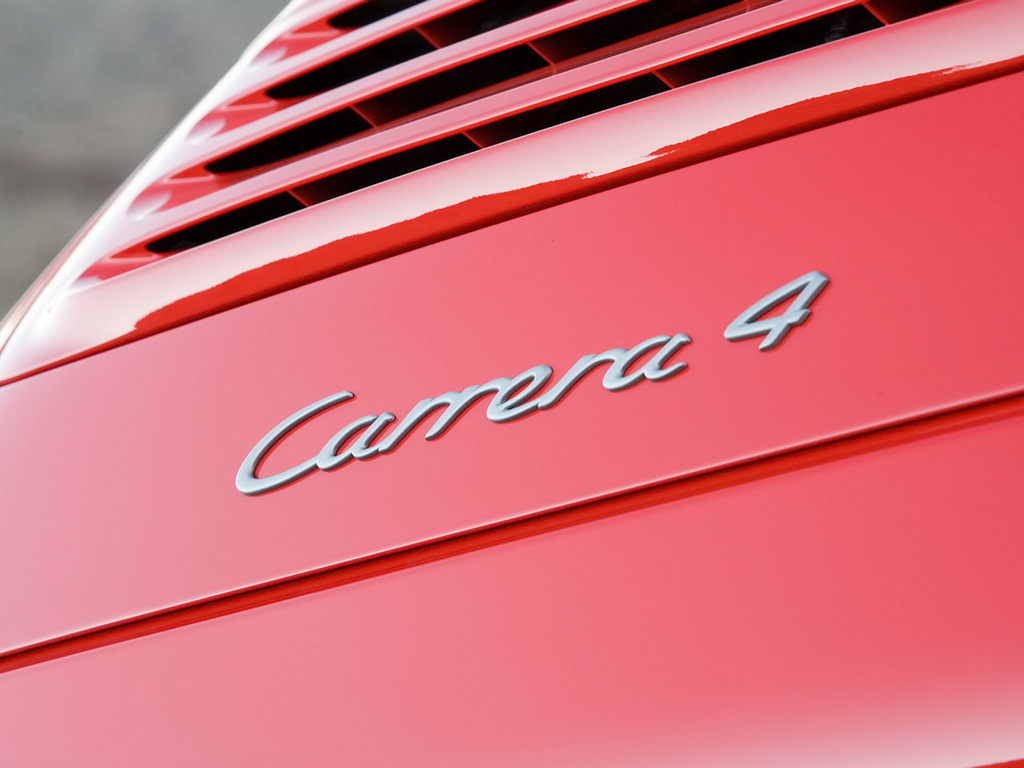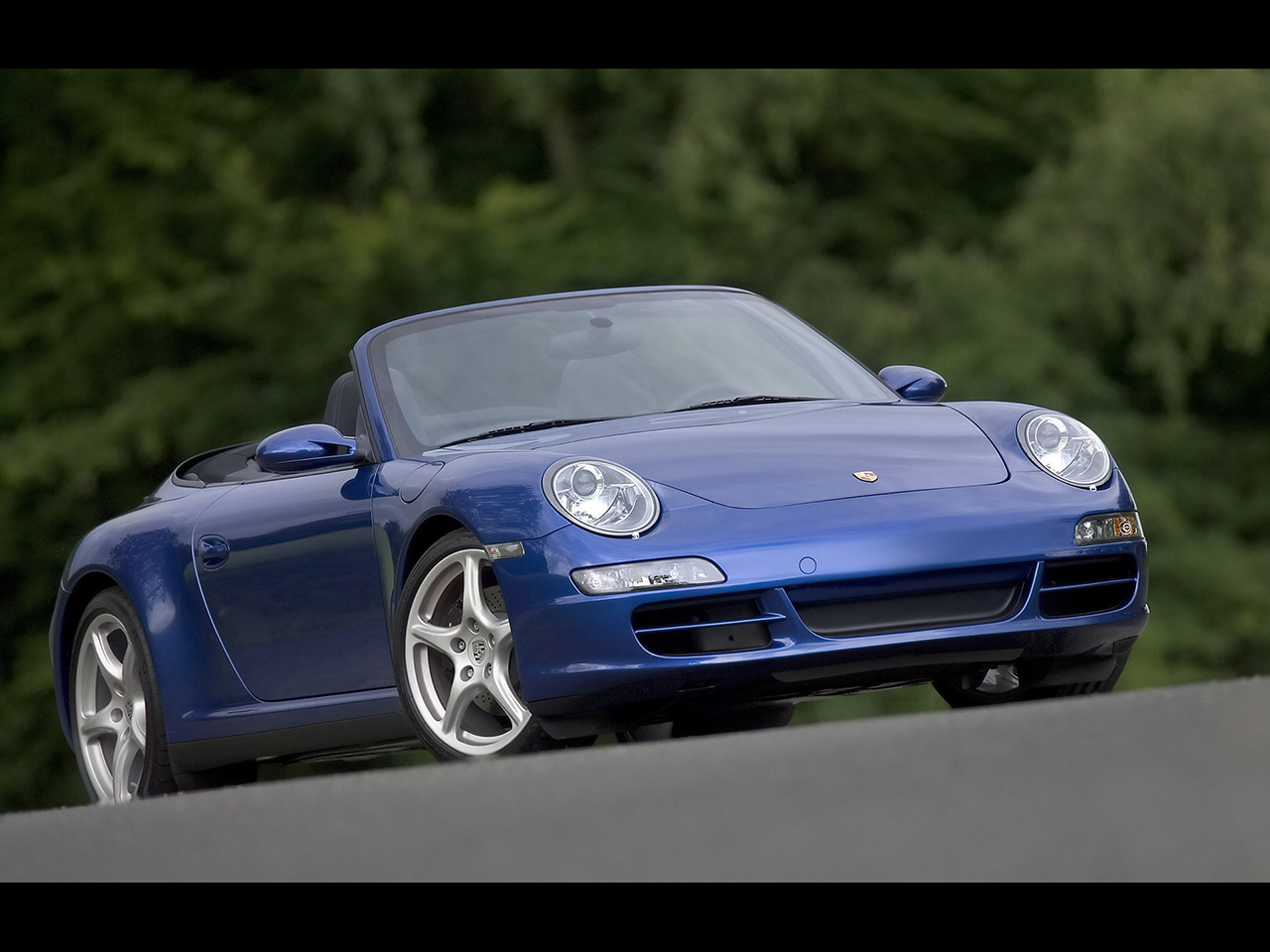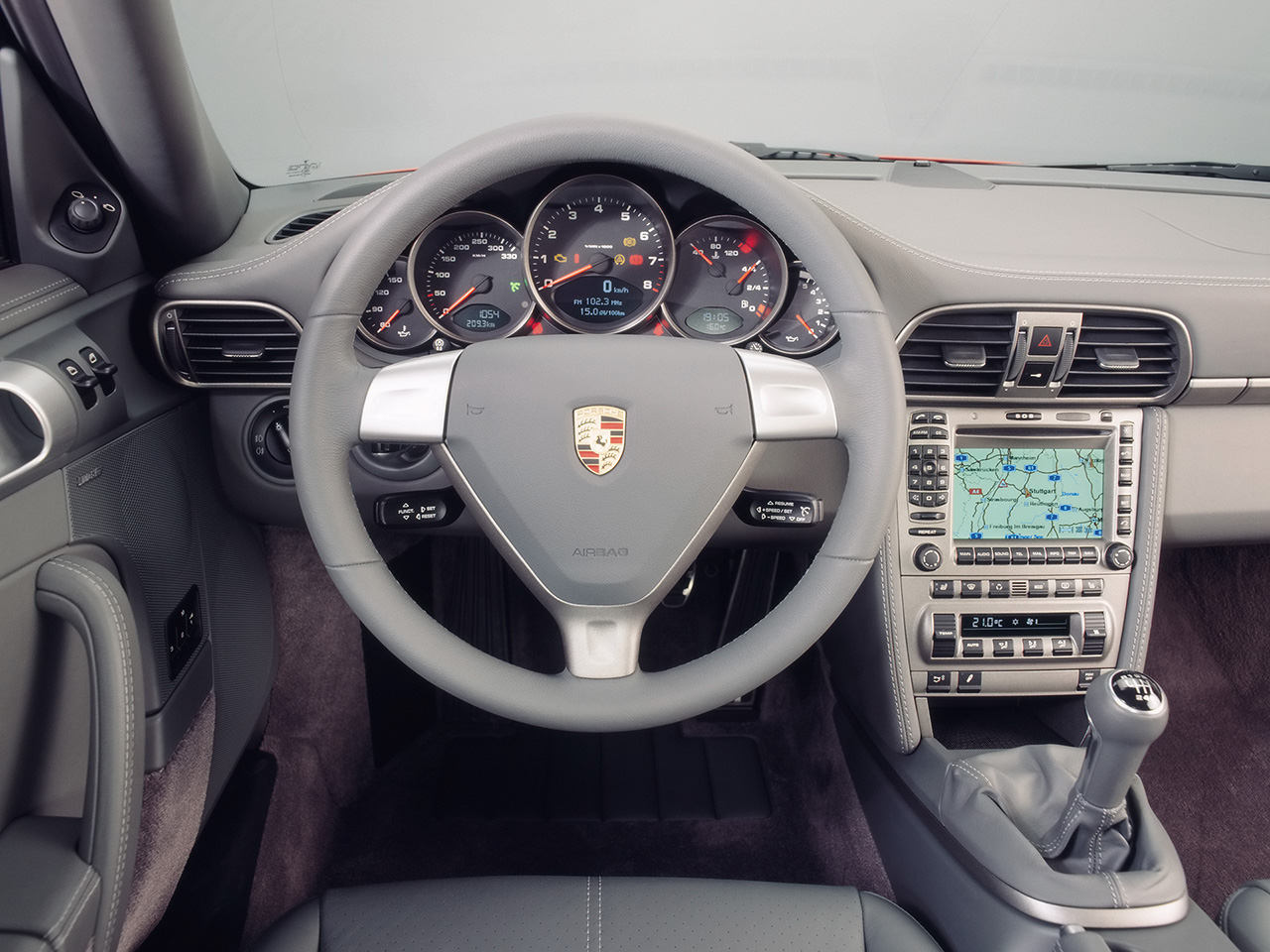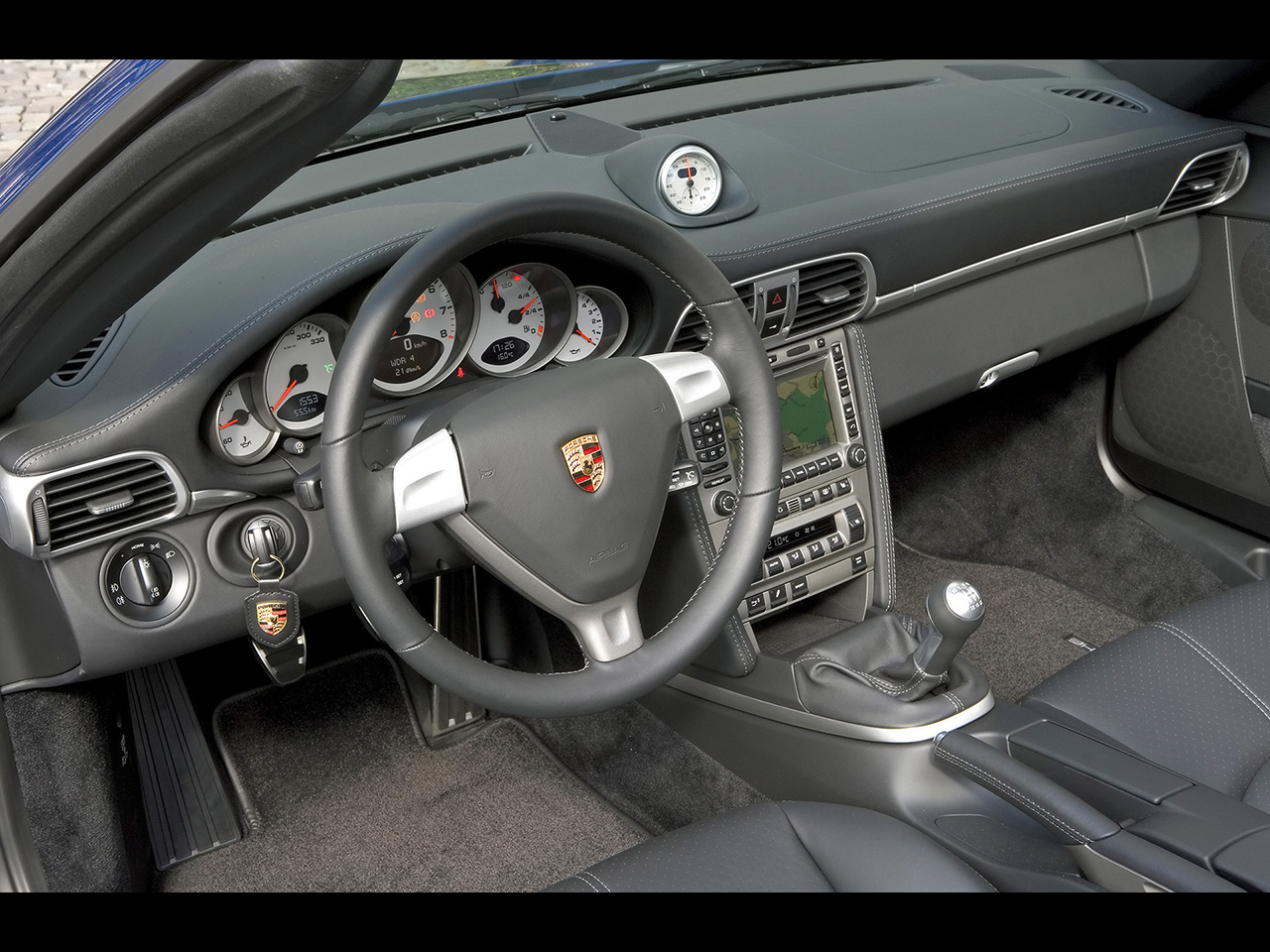2007 Porsche 911 Carrera 4
|
Price |
-- |
Production |
-- | ||
|
Engine |
3.6 liter boxer-6 |
Weight |
3329 lbs | ||
|
Aspiration |
natural |
Torque |
273 lb-ft @ 4250 rpm | ||
|
HP |
325 hp @ 6800 rpm |
HP/Weight |
10.2 lbs per hp | ||
|
HP/Liter |
90.3 hp per liter |
1/4 mile |
-- | ||
|
0-60 mph |
4.9 seconds |
Top Speed |
174 mph |
(from Porsche Press
Release) The fabled wide-body, all-wheel-drive version
Porsche 911 returns for the 2007 model year with several
enhancements. These include tire-pressure monitoring systems, North
American navigation systems that include maps of Mexico and Puerto
Rico, and there’s a new exterior color -- Meteor Grey Metallic. Also
available are 19-inch wheels in the new Turbo design.
With its 325-horsepower 3.6-liter horizontally opposed six-cylinder
engine, the 2007 Porsche 911
Carrera 4 is capable of accelerating from a standing start to 60 mph
(96 km/h) in just 4.9 seconds and
reaches 99 mph (160 km/h) in 11.2 seconds. Top speed on the test
track for this car is 174 mph (280
km/h). When equipped with the optional Tiptronic S automatic
transmission, the 911 Carrera 4 Coupe
accelerates to 60 mph (160 km/h) in 5.3 seconds and reaches 99 mph
(160 km/h) in 12.2 seconds.
Top track speed is still an impressive 171 mph (275 km/h).
All-wheel drive for extra driving dynamics
Porsche’s
all-wheel-drive system uses a viscous multiple-plate clutch to send
power to a central
driveshaft that feeds a front differential to turn the front wheels
with between 5 and 40 percent of
the engine’s torque. This system of power distribution provides
enhanced directional stability and
balanced power and traction through turns and on slippery surfaces.
Such a viscous system
exhibits outstanding cooling, even under high loads, and also is
able to handle
large changes in engine torque, for example, under all-out
acceleration. The viscous coupling also
reduces power loss due to friction between the clutch plates, adds
only 110 lb. (50 kg) of weight to the
vehicle, needs no maintenance and reduces potential drivetrain
distortion under extreme braking.
Torque split to the
front wheels automatically adjusts between 5 and 40 percent to
maintain superior
traction. By sending no more than 40 percent of power to the front
wheels, the all-wheel-drive 911
Carrera models exhibit dynamic characteristics similar to the
rear-drive versions, so they will not
understeer or “push” toward the outside over the front wheels in
turning maneuvers.



